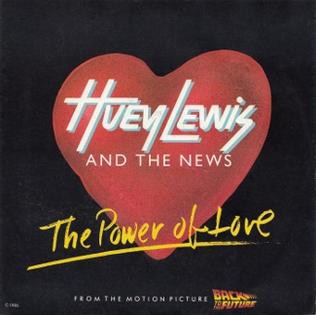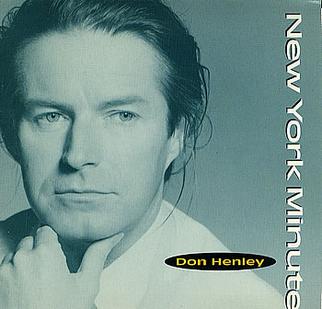When you think of classic rock in its most unadulterated, high-octane, and unapologetically feel-good form, there’s perhaps no better distillation of the genre’s spirit than Journey’s “Any Way You Want It.” Released in February 1980 as the opening track and lead single from the band’s breakthrough album Departure, this electric burst of melody and bravado would go on to define an era, a band, and a philosophy of music that’s rooted more in emotion and drive than subtlety or introspection. “Any Way You Want It” isn’t merely a rock song—it’s an anthem. A glorious, fist-pumping declaration that rock ‘n’ roll is alive, unrestrained, and ready to deliver joy at full volume.
The song represents everything Journey was in 1980: tight musicianship, a knack for unforgettable hooks, and most of all, a sense of uplift that made them one of the quintessential arena rock bands. “Any Way You Want It” feels tailor-made for blasting from car stereos, igniting lighters in stadium crowds, and being shouted joyously in karaoke bars across generations. It wasn’t just a hit—it was the beginning of a new phase for Journey, the crystallization of a sound that would dominate FM radio and concert stages for years to come.
What gives the song its power, above all else, is its simplicity and clarity. Co-written by lead vocalist Steve Perry and guitarist Neal Schon during a tour with AC/DC, “Any Way You Want It” manages to blend the straightforward chug of hard rock with a pop-savvy understanding of pacing and payoff. From the moment the track opens with its iconic two-chord riff, it barrels ahead with the precision of a freight train, never veering off course, never overcomplicating what should be beautifully simple. It’s rock built to get people moving, shouting, and celebrating.
Steve Perry’s vocals are, unsurprisingly, front and center—and nothing short of revelatory. His voice, one of the most instantly recognizable in rock history, soars with power and range, carrying the track like a fighter jet on afterburners. Perry wasn’t just a great technical singer—he was an emotional one, too. Even in a song as upbeat and energetic as this, there’s an urgency and sincerity in his delivery. He sounds like a man trying to win your heart with pure charisma, and by the chorus, he’s already succeeded.
The lyrical content is almost comically direct—there are no metaphorical gymnastics or complex imagery. Instead, “Any Way You Want It” delivers a simple message: I’ll be whatever you want me to be. I’ll give you what you need, how you want it, when you want it. This idea of complete emotional surrender, repackaged in the form of a jubilant rock song, makes the track doubly potent. On one level, it’s about physical attraction and romantic longing. On another, it’s an ethos—one that says, “we’re here for you, our fans, and we’ll play this music any way you want it.” It’s both intimate and communal, sexy and inclusive.
Neal Schon’s guitar work is the engine under the hood—sleek, powerful, and economical. He doesn’t unleash overly long solos or indulgent noodling. Instead, his riff is crisp and effective, driving the rhythm forward with pinpoint precision. The interplay between Schon’s guitars and Jonathan Cain’s keyboards (though Cain wouldn’t join until Escape) would become the band’s signature sound in later years, but here, it’s all about the guitar-forward attack. The solos, when they do arrive, are like lightning bolts—brief, brilliant, and thrilling.
The song also benefits from the band’s tight rhythm section. Drummer Steve Smith delivers a galloping backbeat that refuses to let up, while bassist Ross Valory holds the groove steady beneath the chaos. Together, they craft a foundation that allows the song to feel weightless and charging all at once. It’s the kind of muscular, finely honed musicianship that often gets overlooked in radio hits, but it’s critical to what makes “Any Way You Want It” so addictive.
“Any Way You Want It” arrived at a crucial juncture in Journey’s career. They were already on the upswing thanks to 1978’s Infinity and 1979’s Evolution, but they hadn’t yet crossed into full-blown superstardom. This song—and Departure more broadly—was the bridge. It opened the door to bigger tours, wider radio play, and the kind of mass appeal that would define their next phase. By the time Escape dropped in 1981, Journey was a juggernaut. But it was “Any Way You Want It” that greased the wheels and signaled that they were ready to take over.
One of the things that makes the song endure decades after its release is how well it translates across platforms and generations. Whether it’s being blasted in a sports arena, played during a movie montage, or covered by a bar band in Des Moines, “Any Way You Want It” just works. Its energy is universal. It’s not a song bound by trends or fashion—it’s elemental, instinctual rock music.
That enduring relevance has been further cemented by its presence in pop culture. It famously appeared in the film Caddyshack, instantly associating it with a kind of carefree, high-energy Americana that transcends time. It’s been used in commercials, TV shows, and even video games, always as shorthand for unbridled enthusiasm. Unlike more introspective or melancholic classic rock songs, “Any Way You Want It” doesn’t ask you to feel sad, nostalgic, or conflicted. It simply wants you to feel good. And it accomplishes that mission in spades.
There’s also something undeniably liberating about a song that doesn’t aim to be deep, yet still feels meaningful. In a world where so much music is wrapped in layers of irony or self-awareness, “Any Way You Want It” stands out because it doesn’t try to be anything other than what it is: a rip-roaring, joyful celebration of music itself. It doesn’t posture or pretend. It exists to excite you, to move you, to lift you up—and it does all of that within three and a half minutes.
Even within Journey’s catalog, the song holds a special place. Though songs like “Don’t Stop Believin’,” “Open Arms,” and “Faithfully” may be more well-known to casual fans today, “Any Way You Want It” is arguably the purest expression of the band’s rock roots. It’s before the ballads took center stage, before MTV polished their image. This is Journey raw, hungry, and electrified. And for many fans, that’s the version of the band they love most.
As a testament to its timelessness, “Any Way You Want It” continues to be a staple in Journey’s live performances, often eliciting some of the loudest crowd reactions of the night. It’s a reminder of the band’s ability to create shared experiences—moments when thousands of people sing the same words, jump in unison, and lose themselves in sound. That’s not just nostalgia; that’s a testament to the song’s construction and its inherent humanity.
Steve Perry may have left the band in the late 1990s, and a new generation of musicians may now carry the Journey name forward, but the soul of “Any Way You Want It” remains intact. No matter who’s singing it, the spirit of the song—the thrill, the romance, the full-bodied joy—is still present. That’s the mark of a true classic. It’s not just tied to a moment or a lineup—it transcends both.
Ultimately, “Any Way You Want It” endures not just because of what it sounds like, but because of what it represents. It’s a song about giving your all, about bending to someone else’s desire not out of desperation, but out of love and generosity. It’s about meeting the moment with energy and excitement. It’s about saying yes to life, to music, to movement.
Journey crafted a lot of incredible songs during their peak years, but “Any Way You Want It” stands as one of their most distilled expressions of joy. It captures lightning in a bottle—a perfect blend of melody, muscle, and momentum. Over four decades later, it still crackles with the same intensity. Whether you’re hearing it for the first time or the five-hundredth, it makes you want to move, shout, and believe in the power of rock ‘n’ roll all over again.



